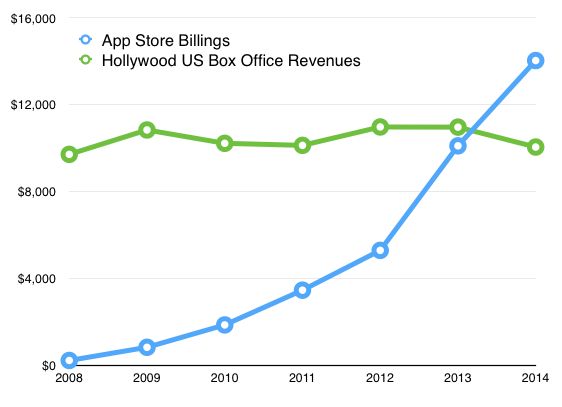Tabletop games have an ancient history, going back thousands of years to Egyptian board games and Roman polyhedral dice. Card games and dice games have been popular for centuries. Miniatures games date back to H.G. Wells’ Little Wars over a century ago, and the tabletop roleplaying game grew out of miniatures in the 1970’s with Gygax and Arneson’s seminal Dungeons & Dragons. The industry reached a high point in the early 1990’s as the first collectible card game, Magic: The Gathering, became a smash hit that continues strongly to this day.
Some may have thought tabletop gaming would dwindle as electronic games became more popular, higher quality, and less expensive. Indeed, we’ve now reached a point where most adults in the United States carry around with them a highly capable, well-connected gameplaying device, and most of the games you find for that device are free to play. How could tabletop games, which now are often priced in excess of $50, possibly compete Are they even relevant any more
The opposite is true, as tabletop games now exert a greater influence over video games than ever before. It’s easy to see the influence of tabletop roleplaying games on the multi-billion dollar RPG business, as almost all MMORPGs still rely on the basic game mechanics of D&D (classes, levels, hit points, and so on). Magic: the Gathering is the inspiration for hundreds of millions of dollars in digital collectible card games and their variants. Hearthstone is just the latest, most successful version of basic CCG mechanics in an electronic form.
One thing to note here: Sadly, the original tabletop games that have catalyzed billions of dollars in revenue for electronic games remain unable to come up with a popular version of their game in an electronic form. Wizards of the Coast has an online version of Magic: The Gathering, but it’s never done anywhere near as well as Hearthstone. Dungeons & Dragons has had multiple electronic versions, but none of them have come close to the success of World of Warcraft. Perhaps the difficulty there lies in being to tied to to the original version of the game, in much the same way the author of a novel would struggle to create an effective movie version of the property.
Why have tabletop games remained popular in an age of inexpensive, ubiquitous electronic games? The most important reason is the social aspect, the sheer pleasure that these social primates take in physically gathering to play in a shared space. Game nights are a great excuse to get together with friends, enjoy good food and drink and their company while competing (or cooperating, in the case of RPGs) in an evening of escapist fun.
The electronic tools that occupy our daily lives have, in fact, helped to keep tabletop gaming active. It’s now easier than ever to coordinate a game night among friends, since everyone can check in on Facebook or some other social tool. There’s a number of tools for smartphones designed to make gaming easier, and some forward thinking games like the hit Golem Arcana are even integrating electronics into a classic miniatures battle, making it easier and more accessible.
Another factor in the continuing popularity of tabletop games has been better production values in tabletop products, from board games to RPG books to card games. This has been vastly aided by the spread of low-cost printing of short or even individual product runs. While you still can get the best unit prices by printing thousands of copies, small publishers find it saves vast amounts of capital to print to order.
One of the key things that tabletop games do well is create motivated, fanatical audiences who can be terrific evangelists. This is something that’s encouraged by web sites and Facebook pages, but even more by the physical conventions that bring thousands of gamers together. It’s no accident at all that PAX shows place tabletop gaming on par with all other forms of gaming, or maybe even ahead of it. The PAX organizers know full well that tabletop gamers are some of the most dedicated gamers of all, and they are usually dedicated electronic gamers as well. And they are terrific evangelists, because they want to bring their friends into this addictive form of gaming.
The current discoverability crisis for mobile games is because you have games being developed without an audience, and then the game developers have to go and find an audience — or create one. When you can start with an audience, it’s far easier to be successful. Look no further than the Exploding Kittens Kickstarter to see how a fairly simple game can have an explosive success, because it’s building on an existing audience already predisposed to like that sort of game. The game has already blown past its $10,000 goal, and it’s raked in over $3.5 million with 27 days left to raise money. Note well the huge popularity of tabletop games on Kickstarter, where they far outdrew video games in crowd-funding.
What’s the lessons to be learned from tabletop games for electronic game publishers? First of all, remember the importance of social interaction in building a fanatic audience that will become terrific evangelists. That is a byproduct of a fun, in-person experience around a tablet, and then countless hours of demos in retail stores and at conventions. Electronic games need to find ways to bring gamers together and want to share their experiences, and many of the most successful mobile games have done just that.
Marketers need to understand the importance of the in-person experience when it comes to showing off games. Sure, videos are great, but there’s a reason we see thousands (or even hundreds of thousands) of people crowding into convention centers to experience games firsthand. Shows like Gamescom, GenCon, PAX, Origins, and the myriad local game conventions held year-round are terrific venues to get attention and start building an audience. Yes, it’s not something that can be done sitting at your desk with the click of a button. It’s hard work creating, managing and executing a single successful convention appearance, let alone dozens. But once you’ve been to those shows, and you see how infectious the fun becomes when it occurs in massive groups, you’ll see the marketing value.
A product like Vainglory, for instance, would be an ideal game to take to tabletop conventions. It’s great fun played with a group sitting around a table, and it’s plenty of fun for spectators, too. Game spectating is a legitimate thing these days, as any glance at eSports audience numbers will tell you. Start tailgating at gamer gatherings with electronic games, and you’ll be building an audience from the ground up.
There’s one more important thing about tabletop games: They are still popular because they have something you can’t get in an online experiece. The shared story creation of tabletop roleplaying has yet to be found in MMORPGs. The feel of an ultra rare Magic card in your hand just doesn’t have an electronic equivalent. The fun of painting your miniatures and pushing your units across a table is still much cooler than pointing and clicking on units on a screen. Look into what parts of tabletop gaming have yet to be replicated electronically, and you may find some ideas worth marketing.

 Brands like Audi are no longer seeing personalization as a marketing gimmick. Audi is
Brands like Audi are no longer seeing personalization as a marketing gimmick. Audi is 



